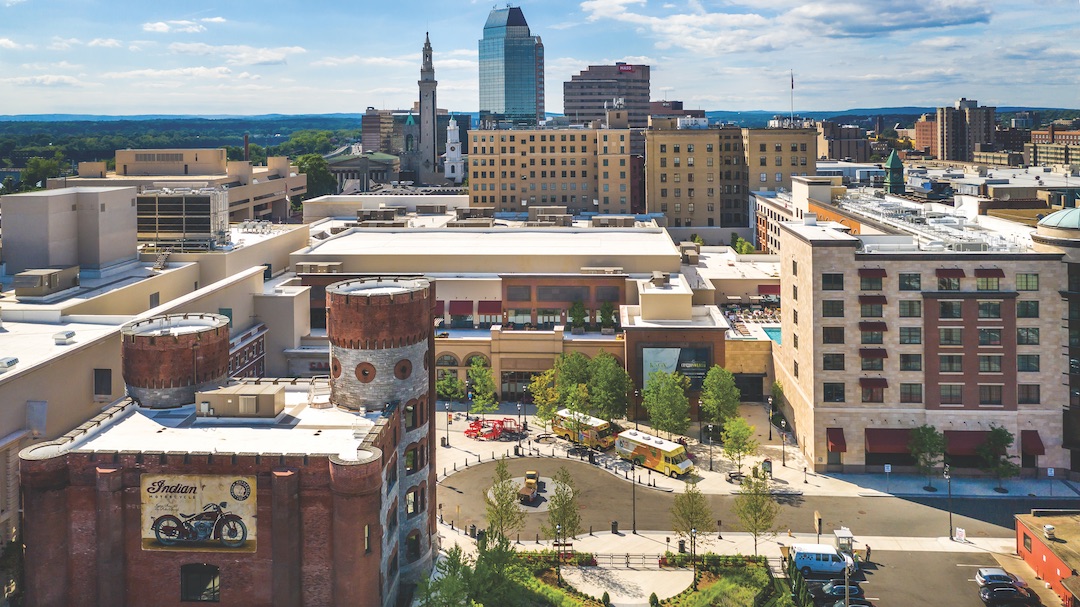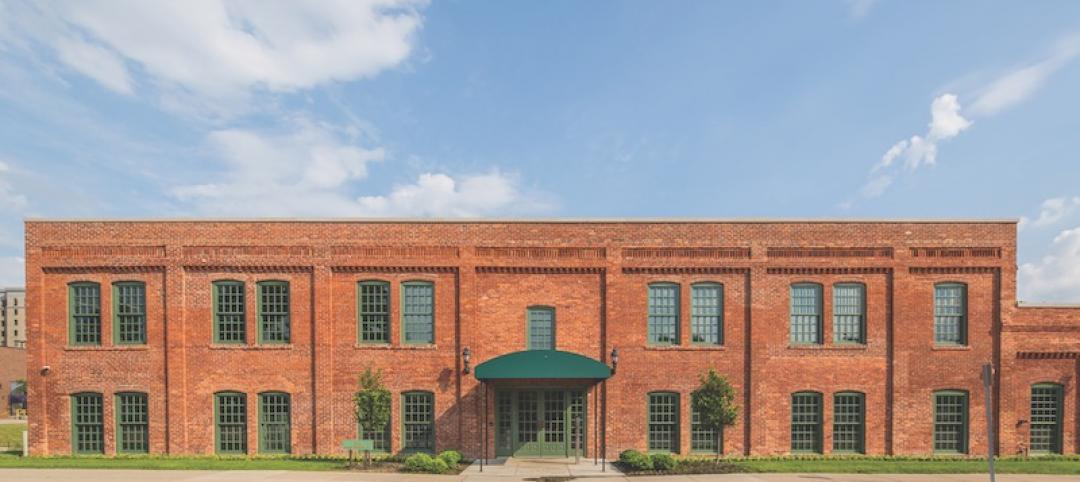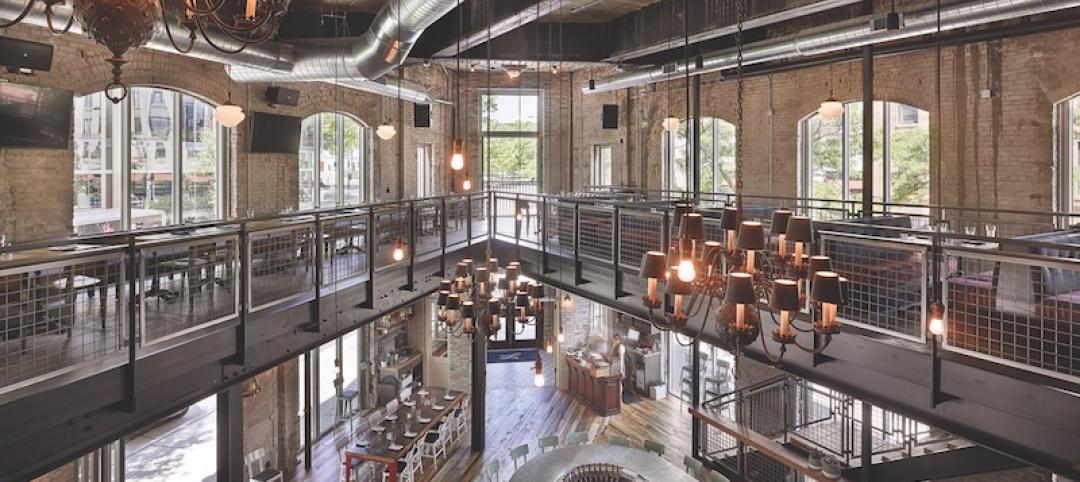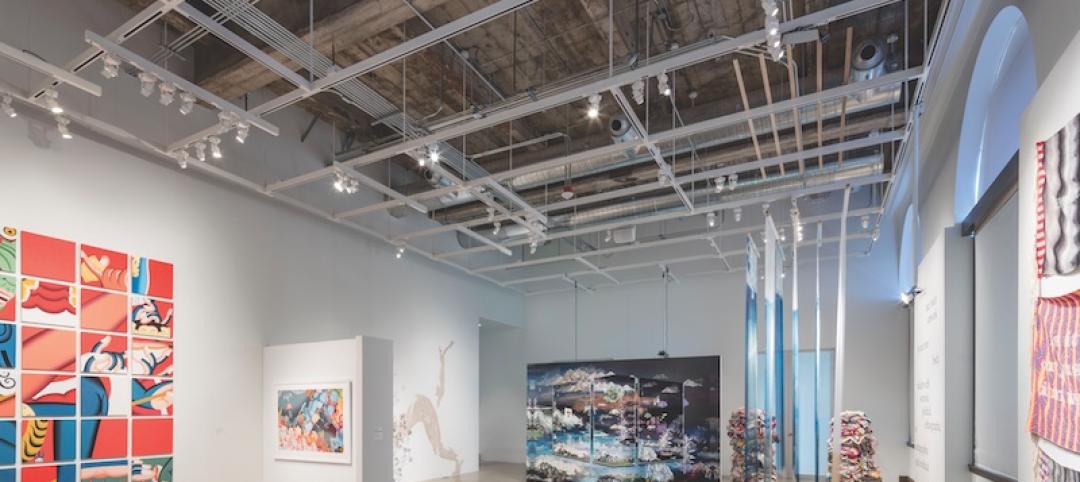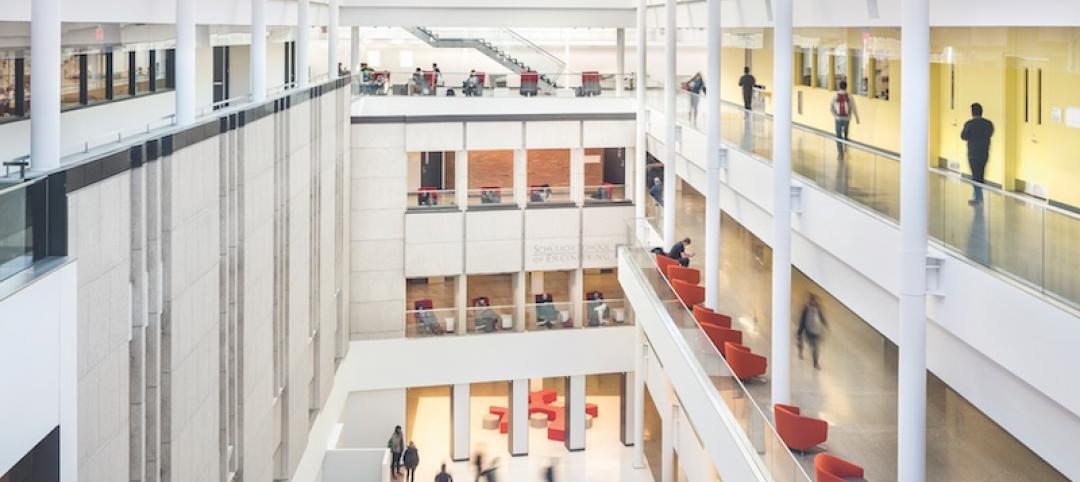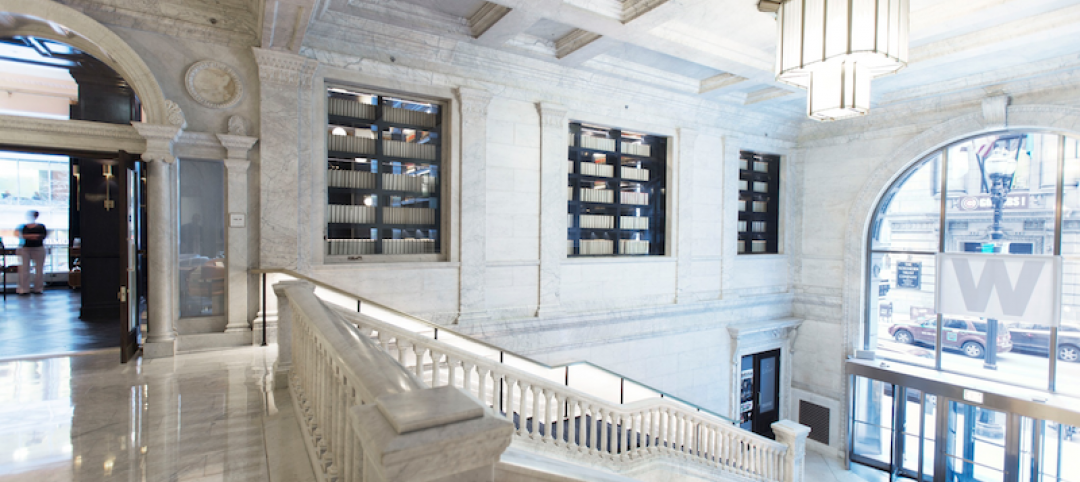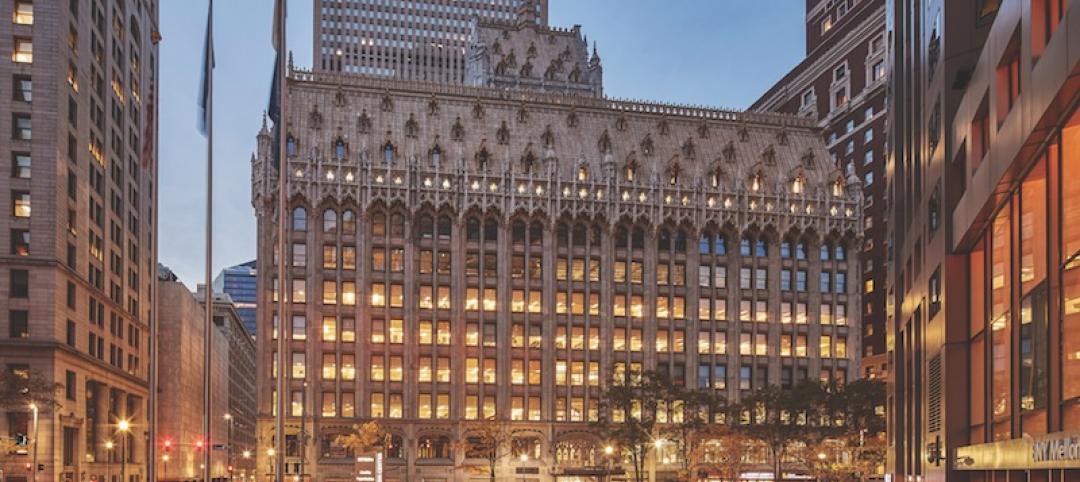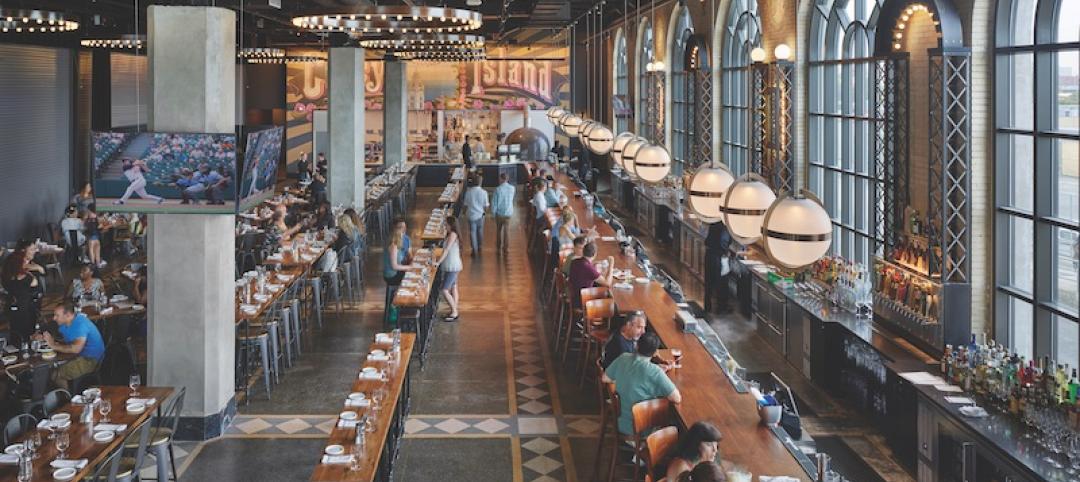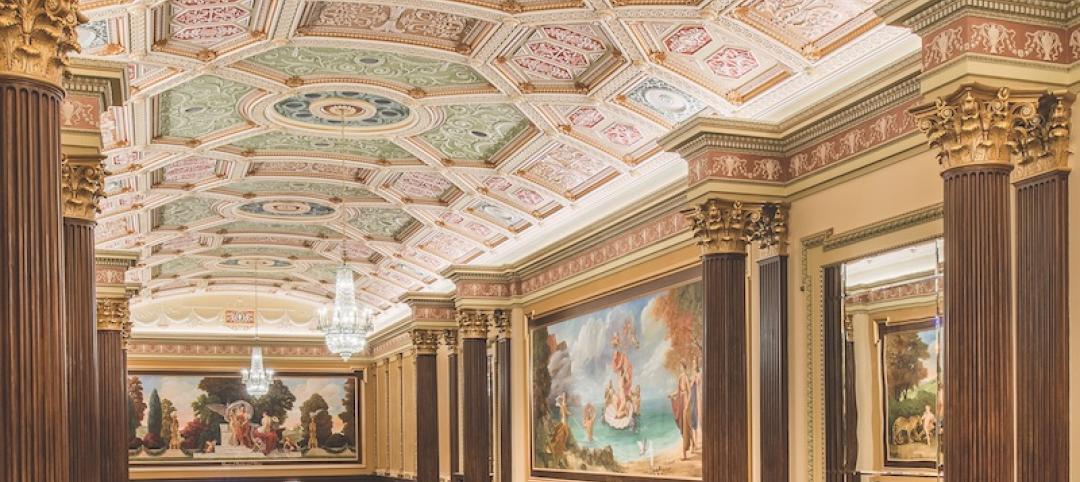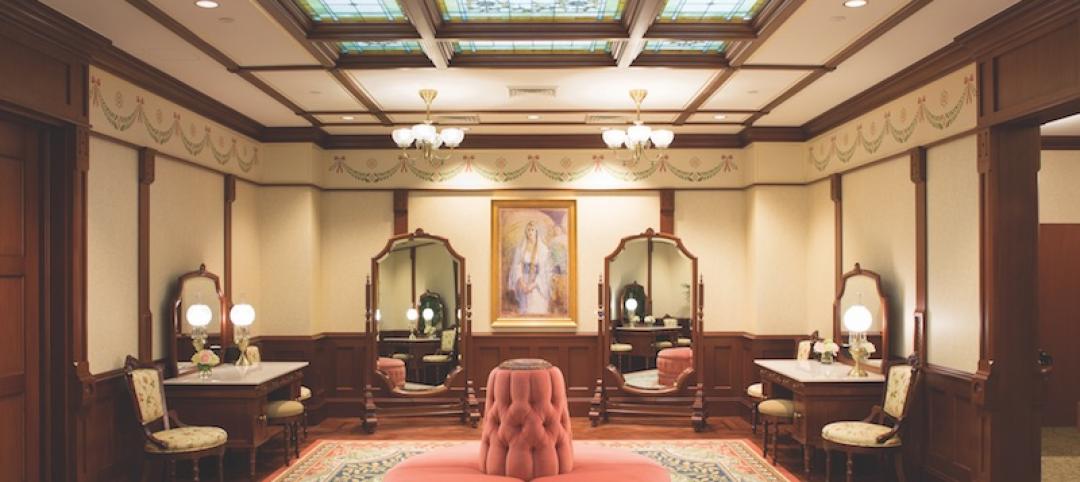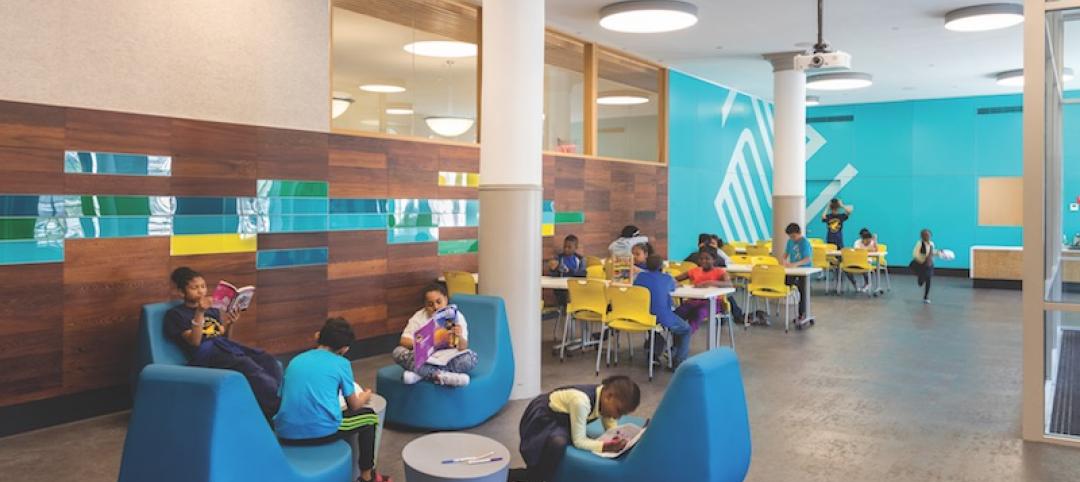The six-story MGM Springfield is the first full-service casino in Massachusetts. It occupies 14 acres over three city blocks and includes a 250-key hotel, a 125,000-sf casino, 46,000 sf of event space, and parking for 3,400 vehicles.
The downtown that this complex is intended to revitalize is a mixture of historic properties, modern high-rises, and remnants of Springfield’s history as America’s arms manufacturer from 1777 to 1968. It also included empty parcels whose buildings were devastated in a 2011 tornado.
MGM chose to preserve and integrate several historic structures into its development, notably the State Armory, the First Spiritualist Church, several office buildings, and the façade of the United Electric Company Building and Union House Hotel.
The project is the culmination of five years of planning, design, and construction. Prior to construction, the site underwent a multiphase transformation. Early planning identified a central plaza and an open-air market framed by exposed steel trusses to provide a vital, human-scale link within the complex. To anchor one end of the plaza, the project team moved the 130-year-old First Spiritualist Church from its original location—which is now occupied by the casino’s gaming floor—to a spot along Union Street, 200 yards across the casino site. The relocation was accomplished in a single day.
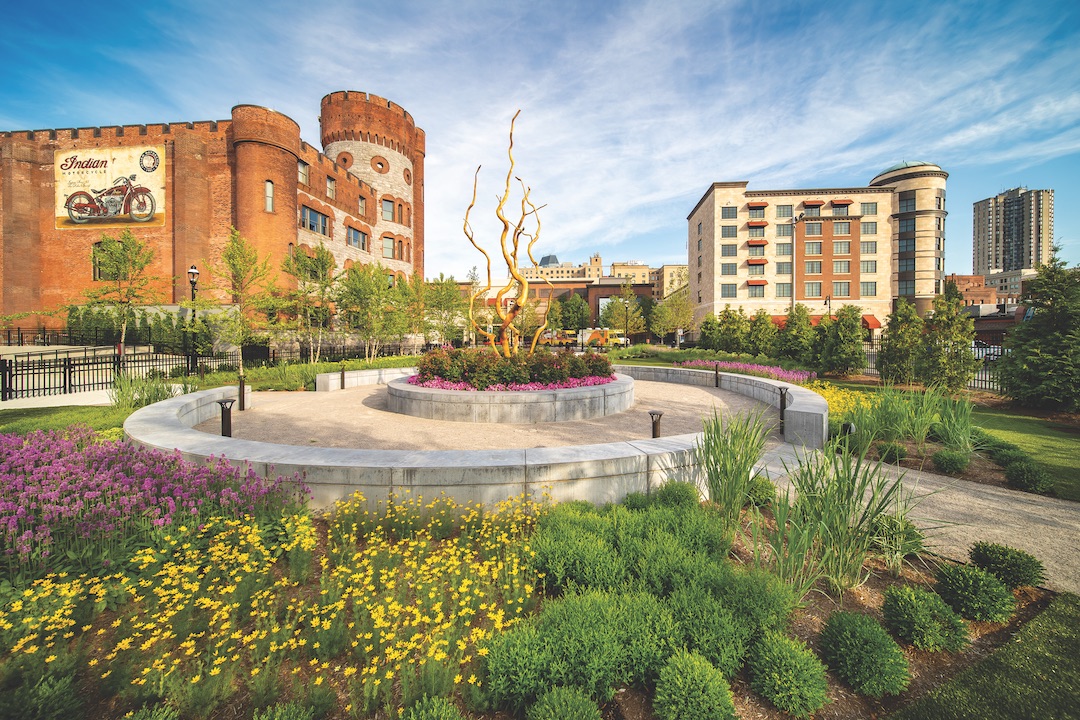 Photo: CHODOS, Inc.
Photo: CHODOS, Inc.
The team erected temporary supports to safeguard two façades: the 172-year-old Union Hotel House and the Beaux Arts-style 73 State Street, built in 1910 for the United Electric Light Company. Its granite façade and ornate stained-glassed dome were refurbished and reincorporated into the casino.
MGM Springfield’s new buildings were designed to match the existing streetscape along Main Street, which required the innovative use of a precast plank structural system to minimize the building heights and ensure flexibility in the façade designs.
The long-vacant State Armory building, originally built in 1895 for a volunteer militia, was completely gutted. All of its floors and interior bearing walls were removed to accommodate the new development’s expansive dining and entertainment venue. The project team erected a steel structure inside the armory’s 70x70-foot shell to support the ground floor and roof. The structure used 15 tons of steel erected 50 feet in the air to support the existing 24-inch-thick masonry turret walls above.
A second existing building at 95 State Street was repurposed to house casino operations on the upper floor. The casino’s main poker room is positioned on the ground level. In areas where casino operations required additional live-load capacity that exceeded existing limits, the concrete-encased steel floor framing was load tested using as many as 500 55-gallon drums filled with water.
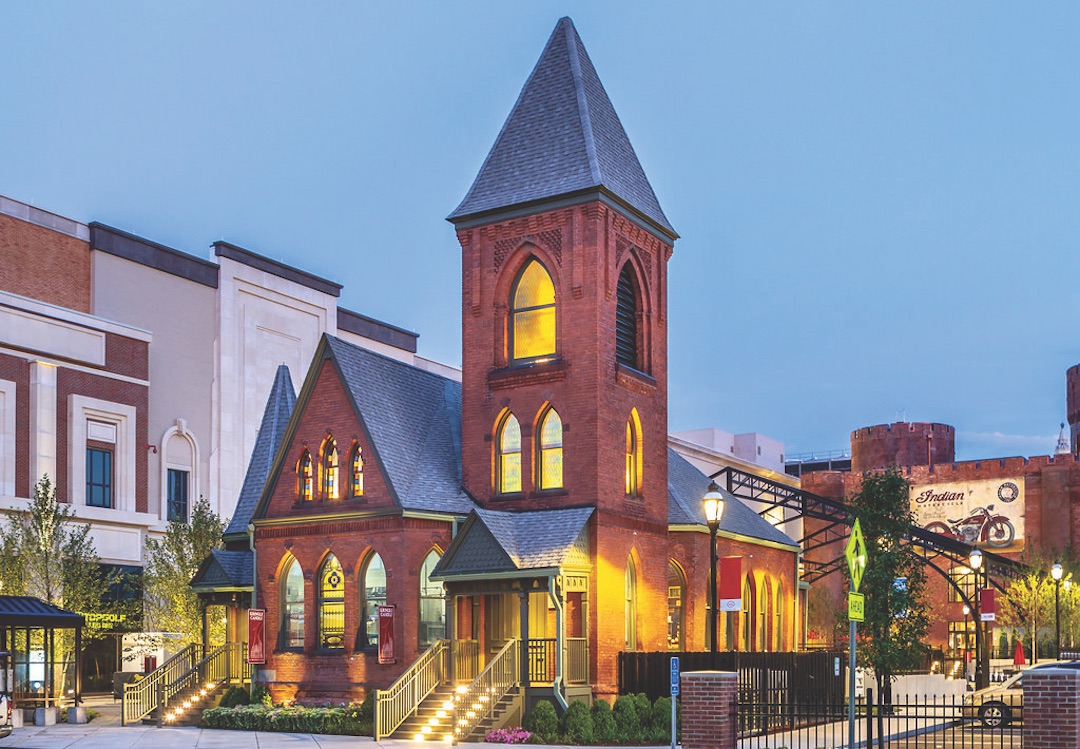 The First Spiritualist Church was relocated whole in one day to make way for the casino’s gaming floor. Photo: CHODOS, Inc.
The First Spiritualist Church was relocated whole in one day to make way for the casino’s gaming floor. Photo: CHODOS, Inc.
MGM Springfield honors the city’s rich history as America’s first armory and the birthplace of the Springfield rifle. The development serves as a catalyst for the continued renaissance of the downtown center. A comprehensive architectural salvage program was implemented to save, preserve, and reuse architectural elements and historical artifacts. As part of this effort, historians identified artifacts and memorabilia that tell Springfield’s story to visitors.
MGM Springfield stands as a case study in how redevelopment can preserve and honor a city’s rich history while contributing to its economic, cultural, and social fabric. Immediate benefits to the community include infrastructure and transportation upgrades, new employment opportunities, and the replacement of tornado-damaged and destroyed structures with a vibrant mix of retail, dining, and entertainment facilities.
Platinum Award Winner
BUILDING TEAM DeSimone Consulting Engineers (submitting firm, SE) MGM Resorts International (owner/developer) Friedmutter Group (architect) Specs Design Group, Studio McCormack, Marshall Moya Design, Avenue Interior Design, Bishop Pass (interior architects) Giovanetti Shulman Associates (MEP) AECOM Tishman (GC/CM) DETAILS 2 million sf Total cost $960 million Construction time March 2015 to August 2018 Delivery method Fast track
Related Stories
Reconstruction Awards | Nov 27, 2017
The birthplace of General Motors
The automotive giant salvages the place from which it sprang, 131 years ago.
Reconstruction Awards | Nov 21, 2017
Mama mia! What a pizzeria!: It started as a bank nearly a century ago, now it’s a pizza parlor with plenty of pizzazz
The first floor features a zinc bar and an authentic Neapolitan pizza oven.
Reconstruction Awards | Nov 21, 2017
Honor Guard: San Francisco’s historic Veterans Building pays homage to those who served in World War I and other foreign wars
The Veterans Building houses the War Memorial staff, the city’s Arts Commission, the Opera’s learning center and practice/performance node, the Green Room reception venue, and the 916-seat Herbst Theatre.
Reconstruction Awards | Nov 20, 2017
Eyes wide open: Students can see their new home’s building elements
The two-phase project revamped an opaque, horseshoe-shaped labyrinth of seven buildings from the ’60s and ’70s.
Reconstruction Awards | Nov 17, 2017
Gray lady no more: A facelift erases a landmark’s wrinkles, but not her heritage
The Building Team restored the granite and terra cotta façade and reclaimed more than 500 double-hung windows.
Reconstruction Awards | Nov 17, 2017
Elegance personified: New life for a neglected but still imposing retail/office space
The building was in such disrepair that much of the reconstruction budget had to go toward structural, mechanical, and electrical infrastructure improvements.
Reconstruction Awards | Nov 16, 2017
Back to the '20s: Coney Island gets a new eatery reminiscent of the past
This project included the restoration of the landmark Childs Restaurant.
Reconstruction Awards | Nov 15, 2017
Foyer fantastique: Faded images provide the key to a historic theater's lobby restoration
The restoration relied heavily on historic photos and drawings.
Reconstruction Awards | Nov 14, 2017
Hallowed ground: A Mormon temple rises from the ashes of a fire-ravaged historic tabernacle
Parts of the tabernacle’s exterior shell were the only things that survived the blaze.
Reconstruction Awards | Nov 13, 2017
Harlem Renaissance: A vacant school provides much-needed housing and a clubhouse for children
Word that PS 186 might be demolished brought out the preservationists, whose letter-writing campaign gained the support of the New York Landmarks Conservancy.


